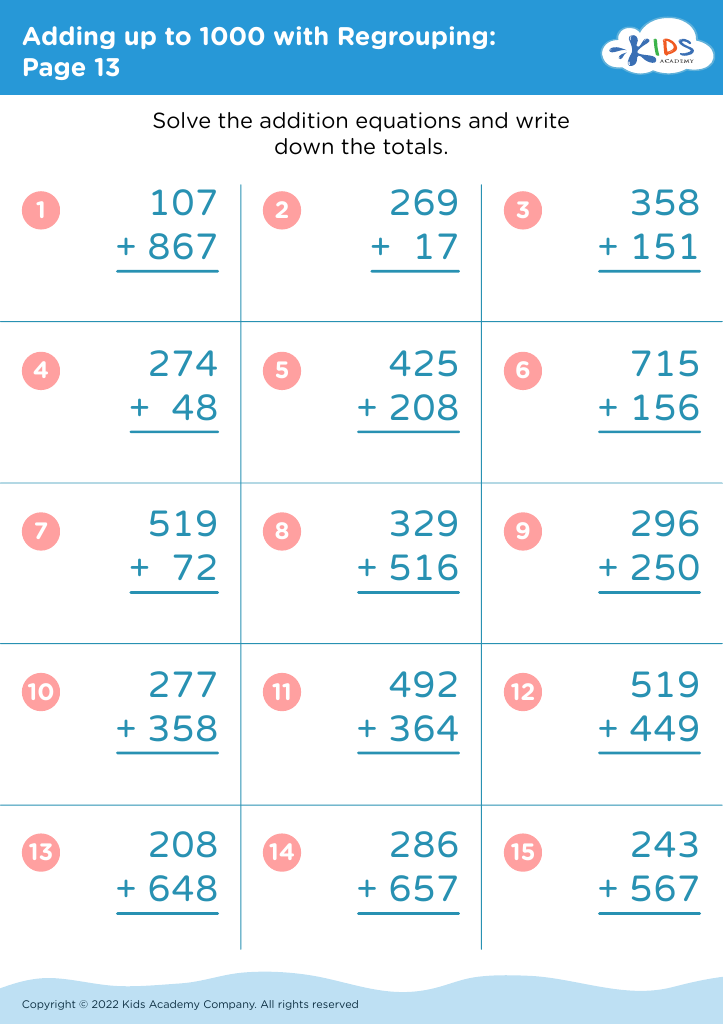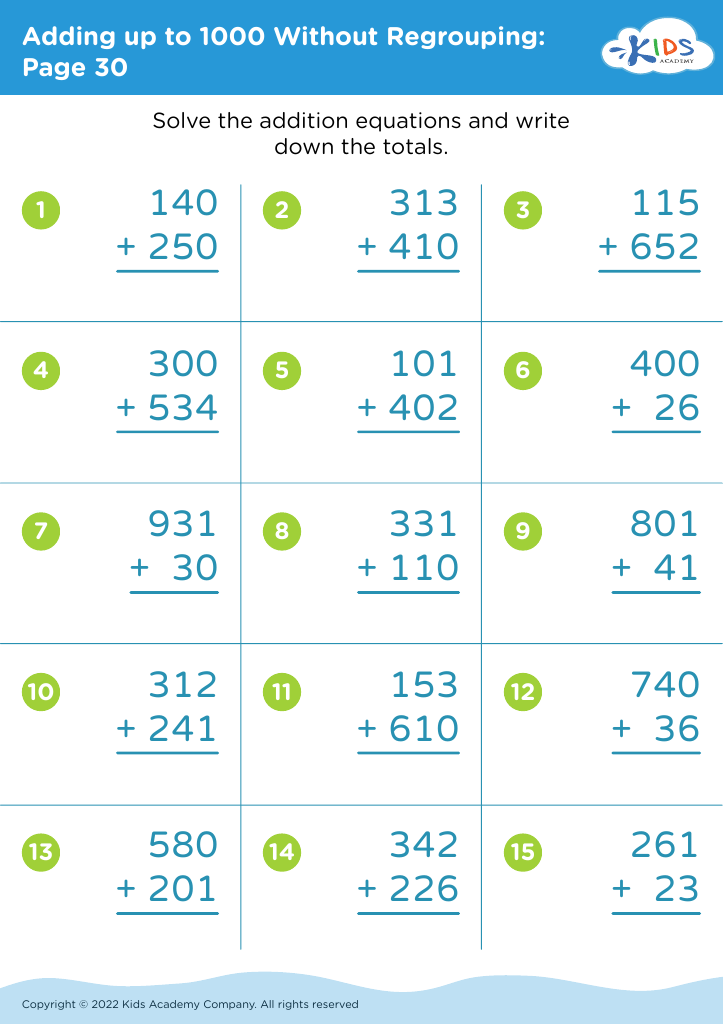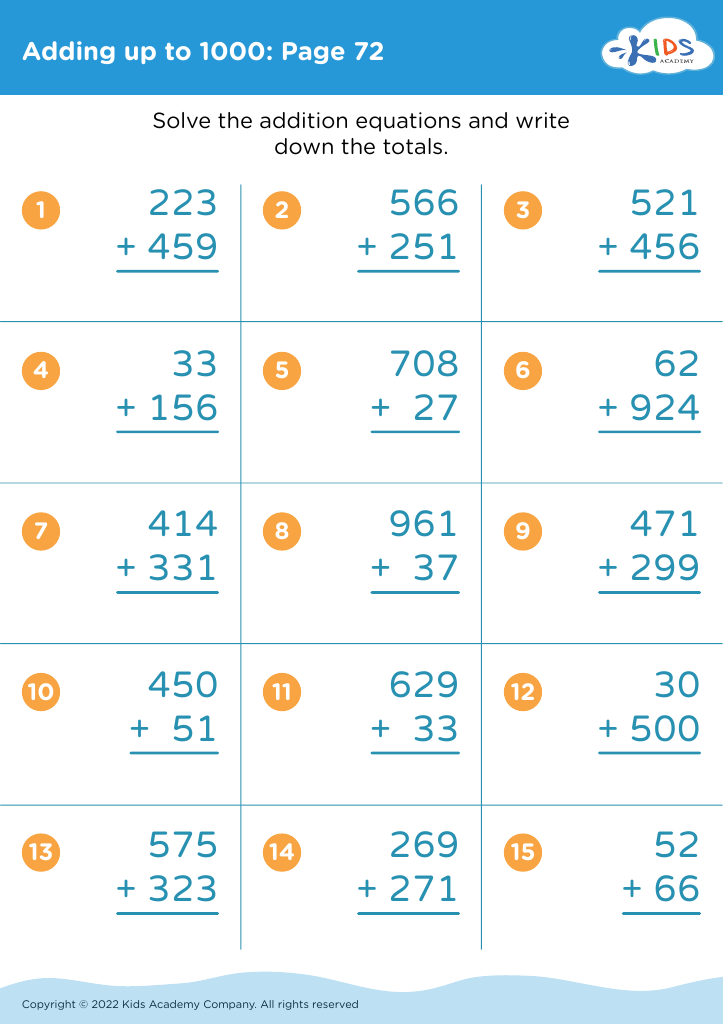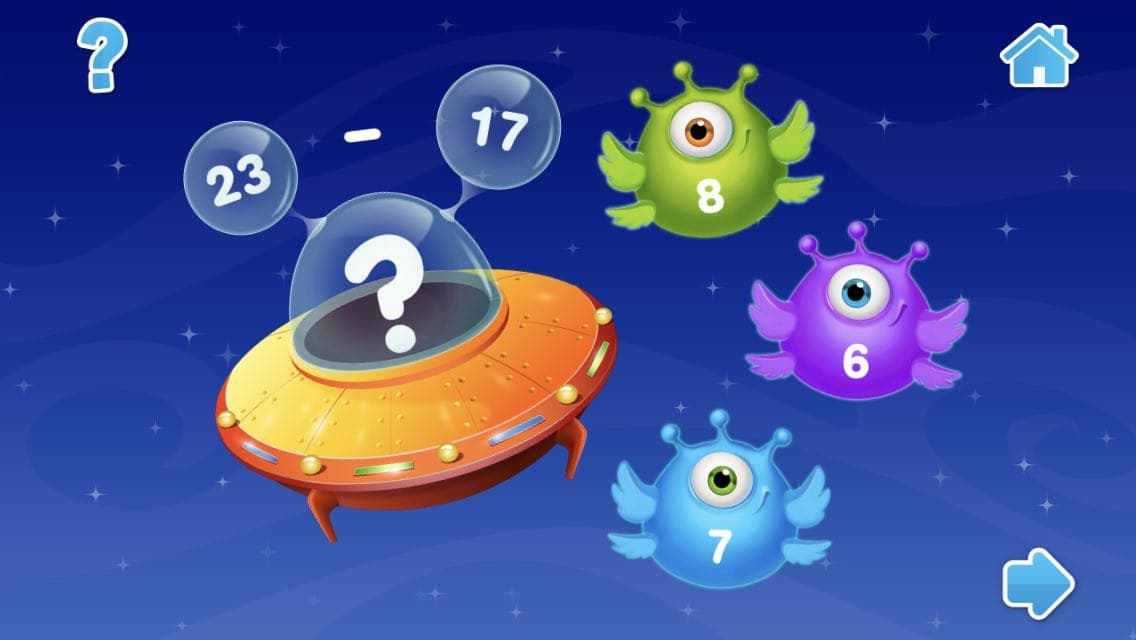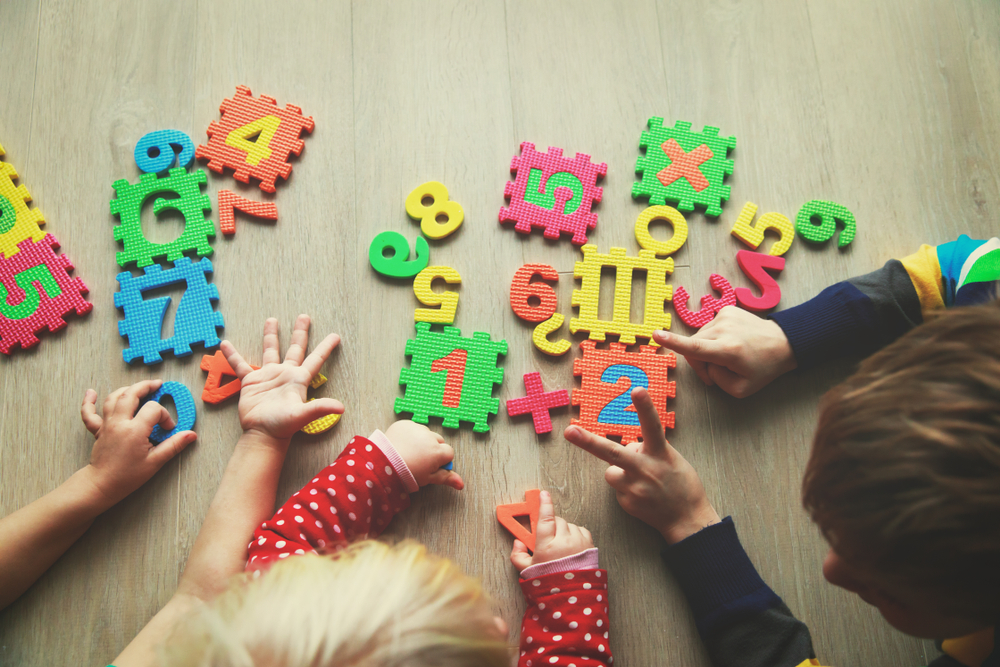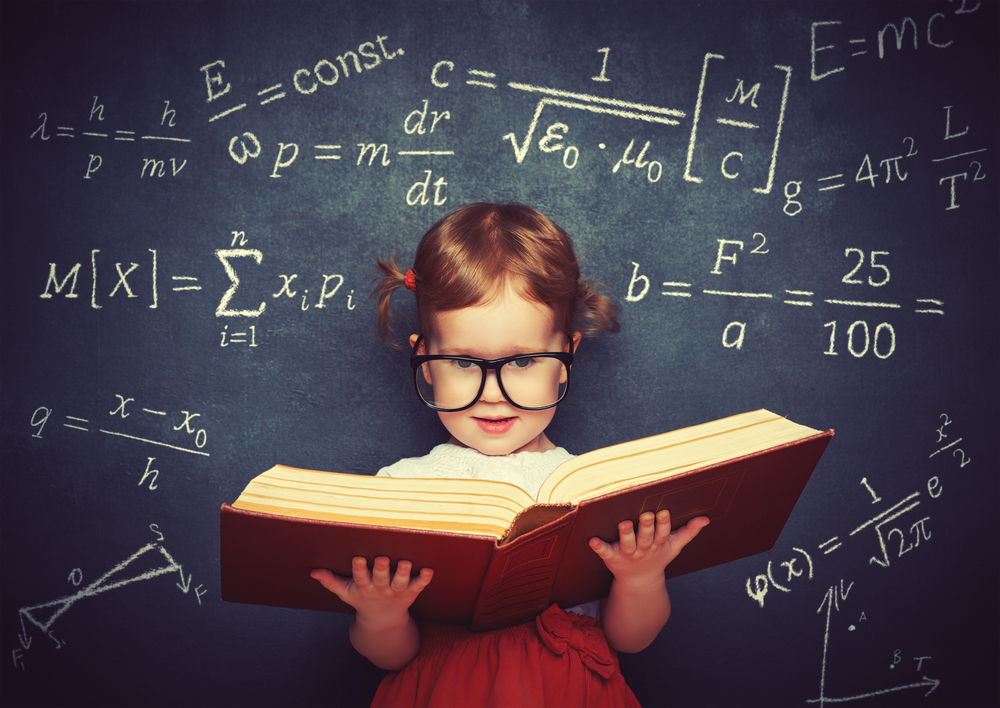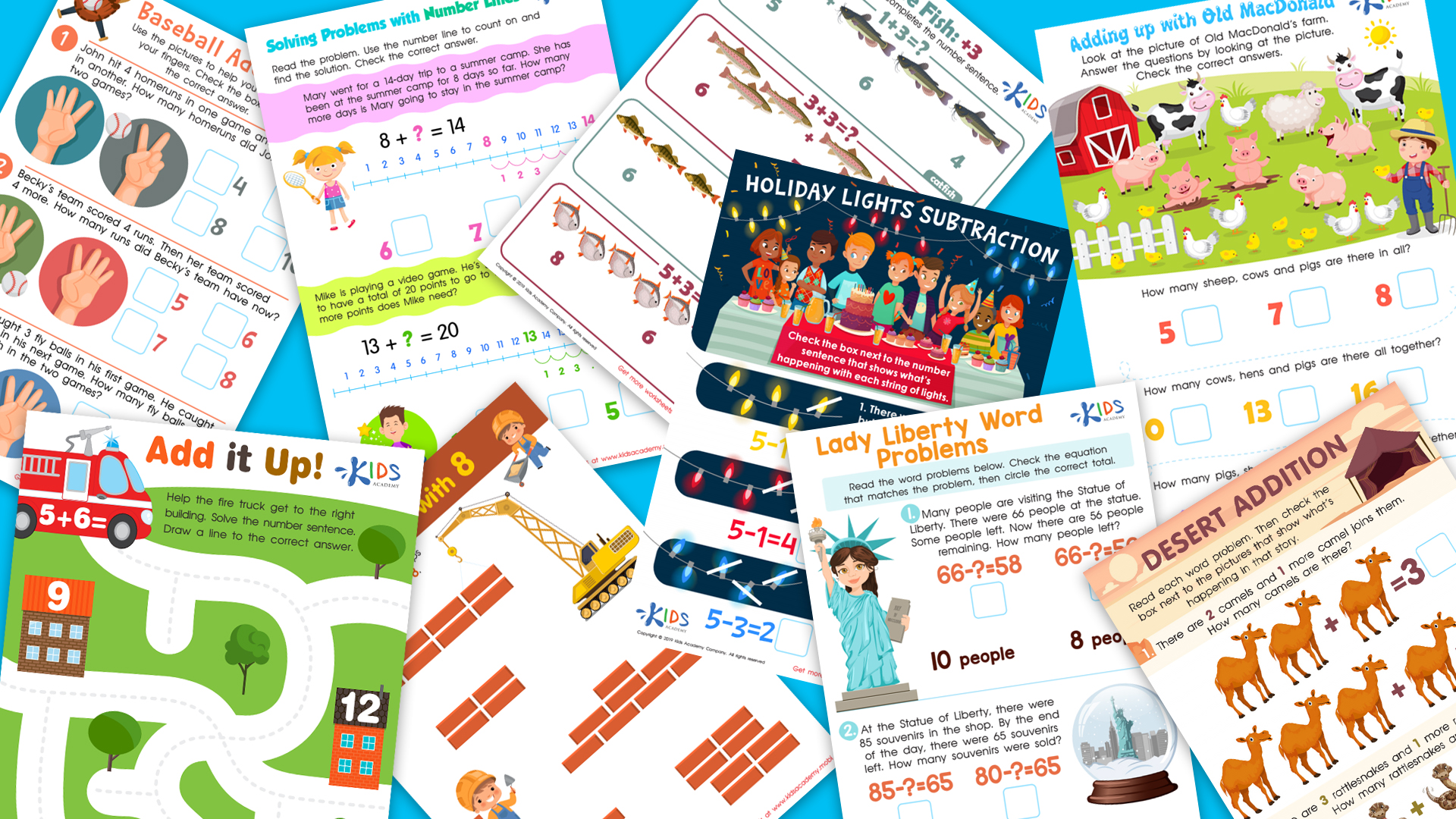Identifying shapes Addition & Subtraction Worksheets for 9-Year-Olds
3 filtered results
-
From - To
Discover our engaging Identifying Shapes Addition & Subtraction Worksheets tailored for 9-year-olds! These worksheets blend math skills with shape recognition, creating a fun and interactive learning experience. Students will enhance their understanding of geometric shapes while practicing essential addition and subtraction concepts. Each worksheet is designed to reinforce shape identification through creative problems, helping children apply math in a visual context. Ideal for both classroom settings and at-home learning, our resources support foundational math skills and foster critical thinking. Give your child a head start in both geometry and arithmetic with our thoughtfully crafted worksheets – perfect for eager young learners!
Identifying shapes and mastering addition and subtraction are crucial skills for 9-year-olds, and both play a significant role in a child's overall development and education. Parents and teachers should prioritize these areas for several reasons.
Firstly, recognizing shapes enhances spatial awareness and encourages critical thinking abilities. It lays the foundation for understanding geometry, which is vital in real-world applications, such as architecture, art, and design.
Secondly, addition and subtraction skills form the basis for more complex mathematical concepts like multiplication, division, and problem-solving. A firm grasp of these fundamental operations is essential for success in higher-level mathematics and logical reasoning, which children will encounter throughout their educational journey.
Both skills also promote cognitive development, as they involve visual reasoning, pattern recognition, and analytical thinking. Furthermore, engaging children in shape identification and basic arithmetic can make learning fun, creating opportunities for parents and teachers to bond through interactive activities.
By supporting children in these areas, parents and teachers not only equip them with necessary life skills but also foster a love for learning. This helps build a solid foundation for academic success and encourages lifelong curiosity and enthusiasm for mathematics and critical thinking.
